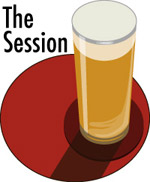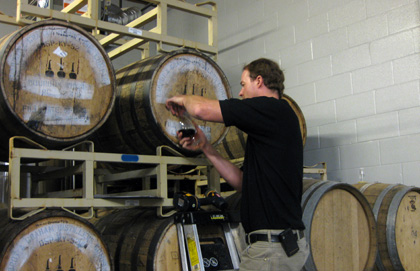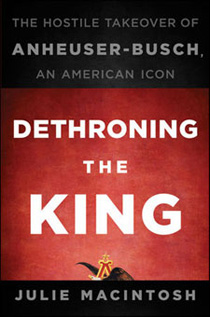I went to high school with a guy who wanted to be a sheep herder when he grew up (this was central Illinois, not Wales). He carried different varieties of wool in each pocket. He liked to pull a batch out and start telling you stories about the breed of sheep it came from. It seems like my pockets are full of bits of beer information. So here goes:
(As a point of order, Schlenkerla — one of two Bamberg breweries still producing its own smoked malts — does not enter these sorts of competitions.)
A source associated with Rock Bottom’s brewing department, who asked to remain confidential, tells us that it now looks like things with the RB-GB merger “aren’t going the way (the most of brewers) had hoped” telling Brewpublic “We’re less than a month into this thing and the new CEO has decided to start making changes to our beer program. He wants us to standardize at least four, and possibly up to six of our beers across the entire company.”
And:
“We’ve never had ANY standardized beers in the history of the company.” says one Rock Bottom employee. “Most of us think (the homogenization of branding) is a terrible idea for a number of reasons, and it most likely signals the beginning of the demise of Rock Bottom to complete irrelevance in the craft brewing world – a la Gordon Biersch.”
I wasn’t aware that Gordon Biersch is irrelevant in the craft brewing world, but this certainly merits watching.
The thought occurred to me that if I were to write about the beers I enjoyed most in 2010 that providing a list of every beer I tasted would make it more “useful.” Let’s say I put Boulevard Brewing’s Saison Brett on the “best” list and not Orval. You might wonder, “Did Stan drink any Orval in 2010 or did he just like Saison Brett better?” But you probably wouldn’t, which is why there’ll be no “best of” post from me. Want a list? How about the list of beer books I put together last year?
Too much to keep track of? Stephen Beaumont has been busy bragging about what he found in Brazil. And we’re headed to Austin, Texas, for the holidays and it seems there are at least ten breweries recently opened, or about to open, or at least beyond the wild dreams stage.
 Mike Lynch of Burgers and Brews has posted the roundup for
Mike Lynch of Burgers and Brews has posted the roundup for 

